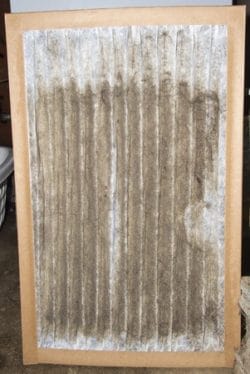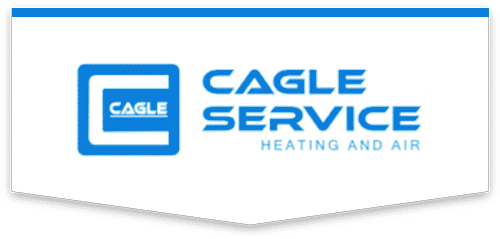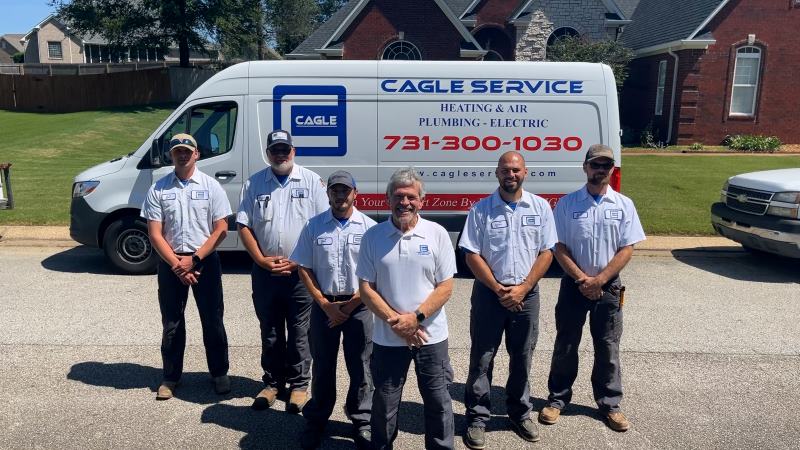The average lifespan of an air conditioning unit system is 10-15 years. Once a unit hits 10 years of age and begins to have air conditioning problems, it is time to see if AC repair costs will outweigh replacing the unit. New units will improve the indoor air quality and also help the resale value of the home.
Noticing white dust in the home? That happens to the duct work as it gets older. The combustion exhaust in a furnace is acidic. If this makes contact with galvanized steel, the acid will react with the zinc in the galvanizing, and this can produce a white powdery residue, as is commonly seen on the terminals of a car battery. If this substance is getting into the circulating air system, there could be a crack or hole in the heat exchanger, and that would be hazardous.
Excess noise shows the possibility of the duct work not being large enough for the square footage or a problem with the unit’s indoor coil.
Are you experiencing a rise in the energy bill but no change in how the unit is being used? That is always a big indicator the system is not running as efficient as it once was. In this post we are going to share with you some common air conditioning problems that hinder air flow.
Top 10 Air Conditioning Problems That Hinder Air Flow
1. Obstructed / Dirty Condenser unit: If a condenser becomes dirty or fouled, less heat transfer can take place from the refrigerant to the surrounding ambient. Dirty or blocked condensers are one of the most frequent service problems in commercial refrigeration and summer air conditioning fields today. If less heat can be rejected to the surrounding air with an air-cooled condenser, the heat will start to accumulate in the condenser. This accumulation of heat in the condenser will make the condensing temperature rise. Now that the condensing temperature is rising, there will come a point where the temperature difference between the condensing temperature and the surrounding ambient (Delta T) is great enough to reject heat from the condenser.
Remember, a temperature difference is the driving potential for heat transfer to take place between anything. The greater the temperature difference, the greater the heat transfer. The condenser is now rejecting enough heat at the elevated Delta T to keep the system running with a dirty condenser. However, the system is now running very inefficiently because of the higher condensing temperature and pressure causing high compression ratios.
2. Blocked Vents: When air vents are closed or unintentionally blocked, your HVAC system doesn’t know this and so continues to pump out the same amount of conditioned air as always. Each HVAC system is specifically designed for a certain amount of square footage. Closing vents and registers will only cause insufficient airflow and increased pressure. As a result, various components on your air conditioner could freeze and fail early and your heat pump and heat exchanger could develop problems as well.
3. Dirty/Clogged Air Filters: Dust and debris in a home air filter restrict air flow, which forces your furnace to strain and use more energy to heat or cool your home. Just like replacing your car engine’s oil and air filter every 3,000 miles, a clean HVAC air filter protects your furnace system from becoming damaged and, ultimately, failing entirely.

4. Blocked or Leaking Duct Work: You can generally identify a blocked air duct by a distinct drop in heating and cooling efficiency, increased energy costs and occasionally a musty, dusty smell throughout the home. Blockage usually comes over time, by a buildup of dust and debris that just accumulates until it begins choking the system. Is there dust all over the home? That is a good indication that there are leaks in the duct work. A leaky duct specifically refers to duct work that has become loose or damaged. You can usually spot this from musty smells throughout the home, or weak heating and cooling.
5. Issue with the Thermostat: When thermostat problems develop, they are rarely dramatic events with sparks flying, or where smoke alarms sound. Most thermostat malfunctions cause subtle or sudden changes in the performance of your cooling system. Since the system’s functionality is affected, it is easy to misinterpret the symptoms as urgent HVAC equipment troubles when a simple fix at the thermostat may be all that is needed.
6. Weak Fan: Each fan has its own motor. Like any other motor, the fan motor has its own wiring, etc., that powers it. If something in the motor has broken down, such as an electrical connection, has bad wiring or some other operating issue, the fan won’t turn. Fan belts can become stretched, cracked and break during normal wear-and-tear. This can result in a slow-turning fan or one that isn’t turning at all. The belt itself cannot be fixed, but it can be easily replaced. Run capacitors create the rotating magnetic field in your system’s condenser fan. A capacitor that is malfunctioning or failing can cause the fan’s motor to slow down and/or overheat. In most cases like this, the run capacitor needs to be replaced.
7. Refrigerant Level Is Inadequate: If your AC is taking longer than normal to cool the home, you may be low on refrigerant. Because refrigerant is what absorbs the heat in your air. So without enough of it, your AC can’t absorb enough heat to cool the air well. If you’re really low on refrigerant, you’ll notice that your supply vents are blowing lukewarm/warm air. Due to lack of refrigerant, your AC runs much longer than needed to cool the home, increasing your energy bills as a result. If you see ice building up on the copper refrigerant line, then you may be low on refrigerant.
8. Over-sized/Under-sized HVAC unit: Read here about the importance of having the right sized HVAC unit
9. Dirty Evaporator Coils: Your air conditioners energy efficiency drops dramatically
Your air conditioner is no longer able to cool your home effectively. Your energy consumption goes up significantly while your cooling efficiency and effectiveness drops like a stone.
The life of your air conditioner unit, a huge home investment, is reduced. Manufacturers assume you will properly maintain the unit when they project years of service.
Cooling efficiency can drop over 30%. At that point, your system is cooling at only 60 or 70% effectiveness. (Note: as little as 0.042 inch or 1/23 of an inch of dirt can reduce cooling efficiency up to 21%)
10. Old/Outdated AC System: An older air conditioner is likely to take a longer time cooling your home. This is often not worth the cost of maintenance and energy. It will only get higher the longer you keep your old system. Damage to the coil, the compressor or the fan means the air conditioner has to work harder to keep your home at a comfortable temperature. This results in much higher energy usage. It’s common knowledge that a 15-year-old AC unit won’t work as efficiently as one designed today, but this could be the reason your electric bill is so high. The longer you try to salvage your old air conditioning system, the more likely it will break down during those times you really need it. If you are getting repair after repair, and the cost is adding up, it’s probably more cost-effective to get a replacement AC unit entirely.
Fix Your Air Conditioning Problems
If you are facing any air conditioning problems, please call us today to help! We at Cagle Service strive to meet all your cooling needs for the coming summer! 731-300-1030



